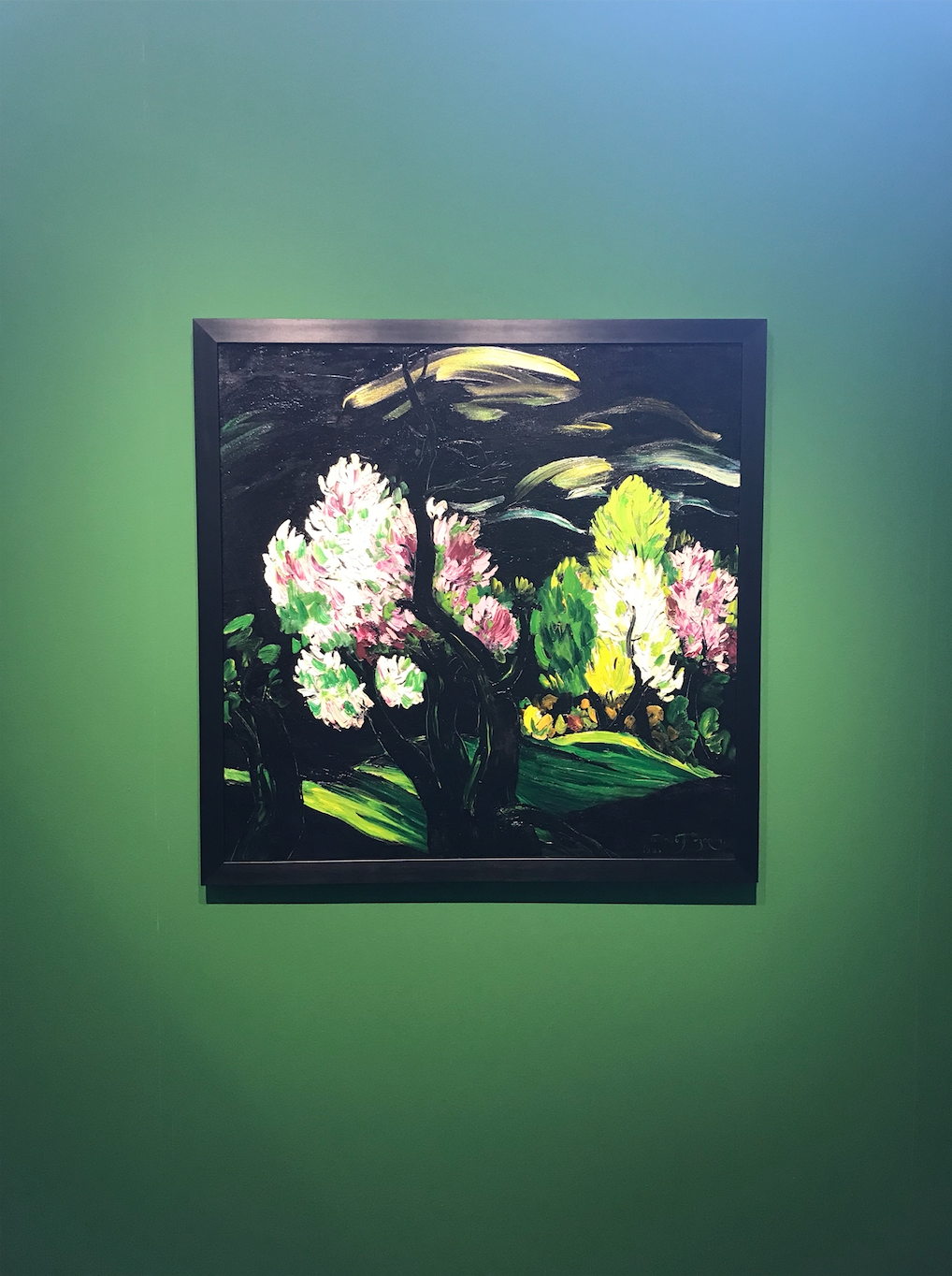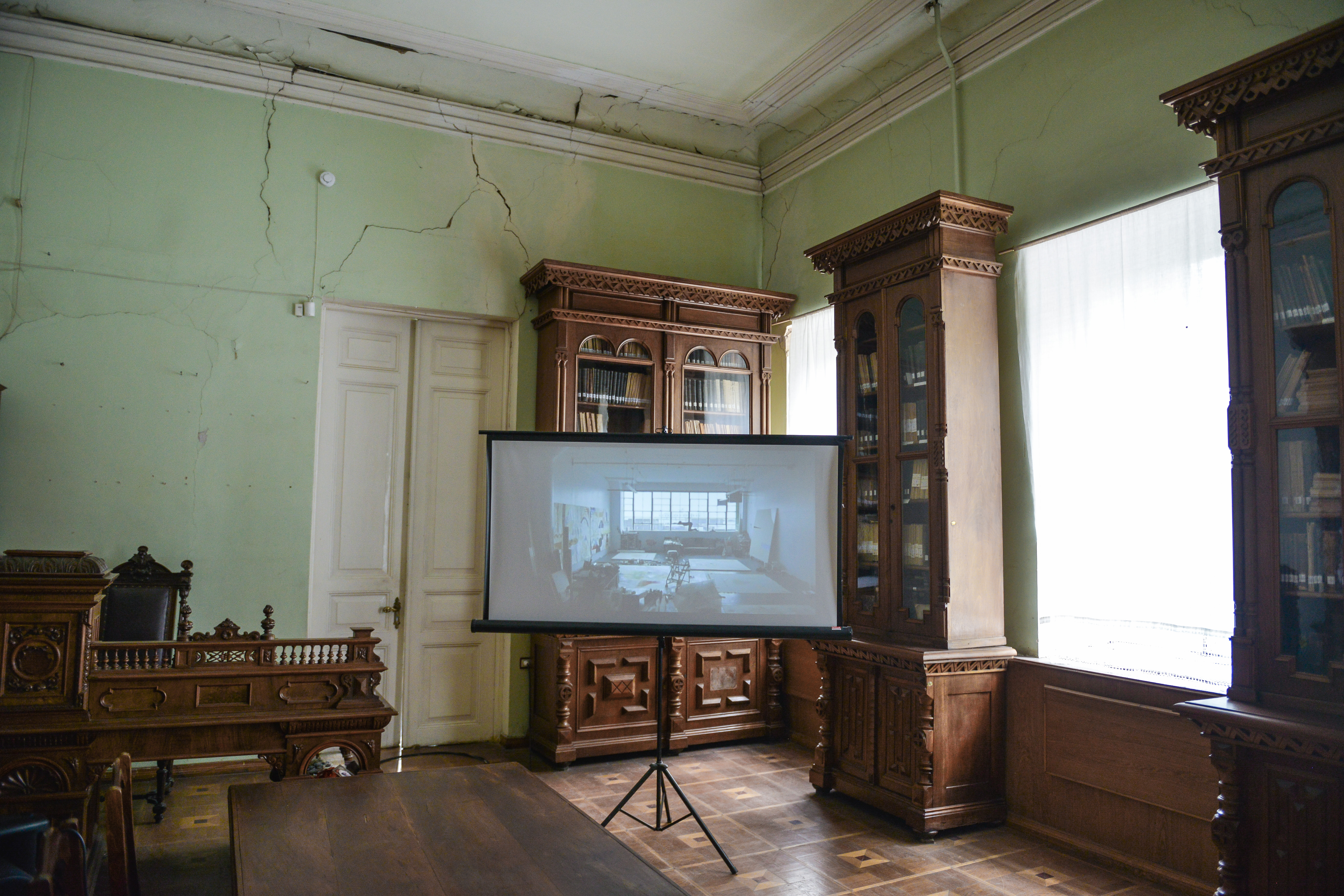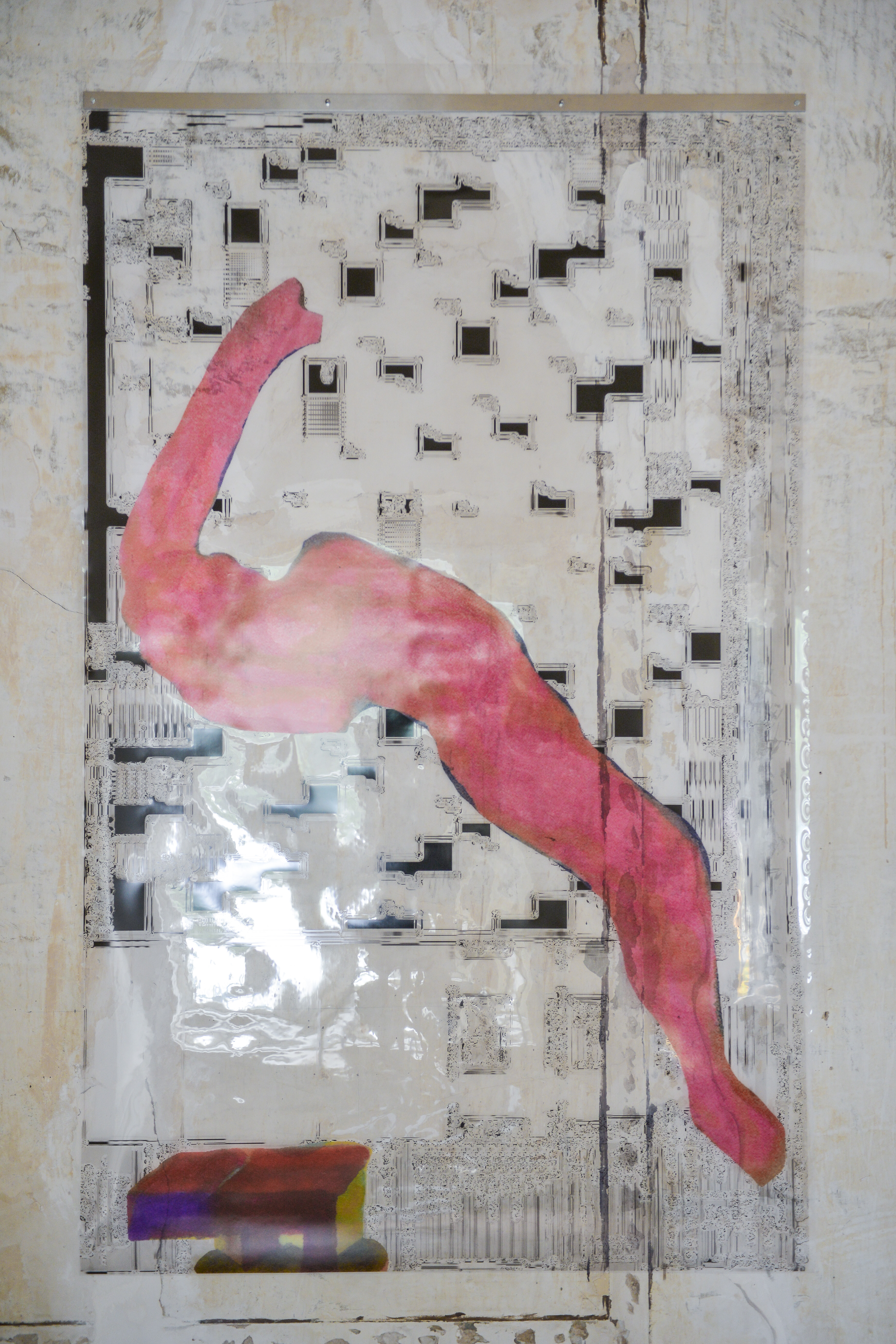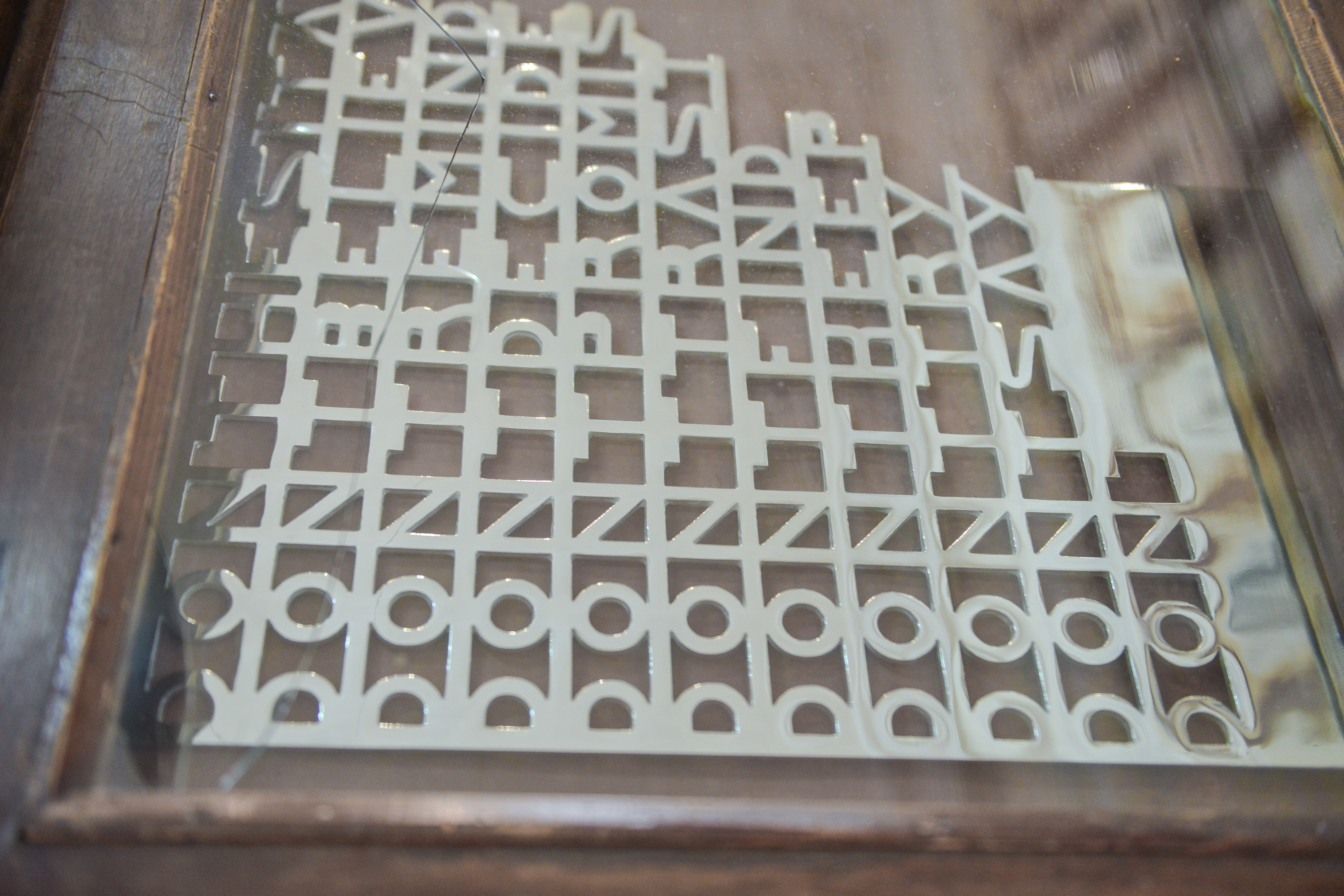The day before I leave for Tbilisi to experience its inaugural International Art Fair, running May 17 to 20, there is news of protests against a sudden but methodical raid on the Bassiani nightclub, in what the Georgian government purports to being a lockdown on the capital city’s drug scene. The protests are attended and publicized on social media by the young artists that were set to be showing in the fair and its surrounding exhibitions. People are dancing in the streets.

During my research of the exhibition, 12 Women Gone Missing, curated by Elene Abashidze for the Tbilisi Art Fair, I find an image online. It is Tamuna Sirbiladze’s ‘flowers 10 (Kremlin Towers)’, a painting made in 2009 that looks both celebratory and foreboding, displaying warnings like flares. Good art has the capacity to contain towers in flowers. The protests are the setting for the art fair. It is a setting that has a combined sense of renewed antagonism with a kind of peace and personal freedom. I want to see what the art in Tbilisi during this weekend looks like in relation to this, to see the towers and the flowers. I want to see the art made by artists born after 1991 (the year Georgia seceded from the Soviet Union) and how the dusty air of this temporal and sudden setting casts itself over the art made by artists during the long century before this.
Hosted in Georgia’s Expo Centre, a collection of buildings that make up a rare display of low, white modernist Soviet Architecture from the 1950s, the main fair includes 30 galleries from Tbilisi and (mostly) other Baltic and Eastern European cities. While walking around I see certain images and themes appear: buildings, stones, grids, cracks, words, statements, mouths speaking, and many personal symbols and motifs specific to the artists feature consistently. It is something I have never wondered about Frieze, but the question crosses my mind here: do the directors and curators of galleries invited to participate in international art fairs think about their locality when deciding upon which artists and which artworks to show? It is an important question and one that Tbilisi Art Fair seems to succeed in asking.

Warsaw’s Raster Gallery presents a pair of haunting black and white photographs from 1975 by late Polish artist, Zofia Rydet. Groups of women with heads made of stone stand side by side and look out to the viewer as though the weight of permanence has been added to their faces. Another work that deals with the fine line between material permanence and a more experiential moment that lasts in the mind is the installation by French artist, Delphine Wibaux. ‘Plots of Time’ (2018) is comprised of fragments of ceramic and paper with sky-like and vegetal scenes printed on their surface in varying solutions that alter according to how long they have been exposed to natural light. Some change, some will not, the artist explains. They are placed loosely around a domed garden like promises of both change and stability, occupying the same wild space. I am reminded of something I see in the second of the three programmed exhibitions of the Tbilisi Art Fair, In and Out of Reality, a survey of the history of Georgian photography. It is by Natela Grigalashvili and shows a rural landscape with what could be at first glance a concrete tower block foregrounded in the centre, a forewarning of what was to come. It is in fact Grigalashvili’s hand in front of the lens. It could be an action made by a contemporary photographer, a picture from a hand series, perhaps. Time is blurred in this moment of viewing.
In another building nearby, artists without gallery representation have been selected to showcase work in an exhibition called HIVE. New York-based Alina Bliumis stands next to her series of prints and describes to me how she watched and waited at passport control, taking notes of all of the different birds on the front of passports. Each bird is accompanied by its nation’s name, acting like a humble caption underneath. The passports have turned into birds and they are free. Bliumis mentions that she produced only one print from each copper plate; they won’t be reproduced and can depart from the series as a whole, permanently.

One highlight of Tbilisi is the exhibition, 12 Women Gone Missing. It is held like a musical note between two venues, the State Silk Museum and the splendid Writers House. Presented are the works of ten women of Georgian origin who each emigrated at some point during their lives. The timeline is varied. Vera Pagava settled in Paris after leaving Georgia during arguably the most turbulent era of the 1920s. Abashidze provides the viewer with this information but leaves the interpretation of what the works might have in common to the viewer. Much like the fair itself, this grouping together of works is a gesture that acts as a question. New York-based Anna K.E.’s video, ‘Multiple Keyholes’ (2014) plays in an old lecture room. The artist moves in the large window of her studio, her body posing perfectly in line with the lines of the metal grid structure on the glass. She is smooth but emulates the hard edges and corners. It reminds me of the works in the Moving Gallery, a shipping container parked in the grounds of the Expo Centre curated by Project Art Beat. Here Tamar Chaduneli presents two floating black plexiglass cut outs that imitate architectural cornices but seem free of any building they ever belonged to.

Back at the Silk Museum, next door to the work of Anna K.E – whose surname is always obscured, perhaps in resistance to the visibility of her origins and subsequent geographic movement as an artist – are three language-sculptures by her mother, Keti Kapandze. I turn my head when looking at ‘Don’t Believe, Don’t Remind, Don’t Decide…’ (1993) and the lines of words made of nickel suddenly become a tower block made up of iterations of self-protection. I hear that Kapandaze has an exhibition opening across the City the following evening. The Tbilisi art scene is like this. The same faces and names support each other, are family even. I hear about another opening at new gallery, LC QUEISSER run by Berlin/ Tbilisi-based, Lisa Offermann. Her first show, Untitled, deals with the airy space that comes after we talk, write or cannot remember how to write and includes artists Hanne Lippard and Ketuta Alexi-Meskhishvili.
An artwork that provides a moment of stillness in the main fair is a painting made in 1980 by late Georgian artist Natela Iankoshvili. She articulated the landscape that surrounded her in a visual language that was completely different to the style of the then contemporary Soviet Realism. It seems like something that is so bright that it will not change over time.
I wonder again about the protests on May 12. How long do such moments of resistance (or display of resistance) last against an unquestioned status quo, and what is their sensibility in relation to the lengthier, underlying protest that has been going on in the past 100 years of the nation’s history? Can these two types of time be seen in the space of one artwork? In one exhibition?
Certainly an exhibition that feels like an artwork in its entirety is the aptly titled, War on Hold/ Under Construction, organised by Liza Zhvania. There is trouble around this show, it seems. It opens an evening late and it closed shortly after the fair due to lack of funds, artist Andro Eradze tells me at the entrance. The exhibition is fleeting, like a pause, and the title suggests, in retrospect, a new way of thinking about something that is under construction. I have always associated the term with permanency and building, but this show places it as something temporary. The press release, which asks what temporary peace ‘looks like’, was undoubtedly written prior to the raid on Bassiani and to the dancing – the question of what happens in a ‘war on hold’ suddenly generates more answers, and of course more questions and more art. Eradze explains later that some artists dropped out and some changed their works completely, last minute.

The energy is high. I hear shrieks that turn into chants and then peaceful singing. It is a performance by a group of people (although I am unsure of its author) and it is a welcome sight; live work is otherwise mainly missing throughout the fair. This building is crumbling, cracks are showing. The young artworks are almost performing the architecture they are on. On the first floor there is a pause within the pause. The room is blue in hue, peaceful but muted. Against the outside of the window is overgrown foliage. It provides a natural sound-proofing service for the painting of a large bird by Salome Dumbadze, whose lines and touch I recognise from somewhere else this weekend amongst the artists that I am convinced will keep looking at their Tbilisi, now, over and over again.
The Tbilisi Art Fair at various locations across the city ran May 17 to 20, 2018.













